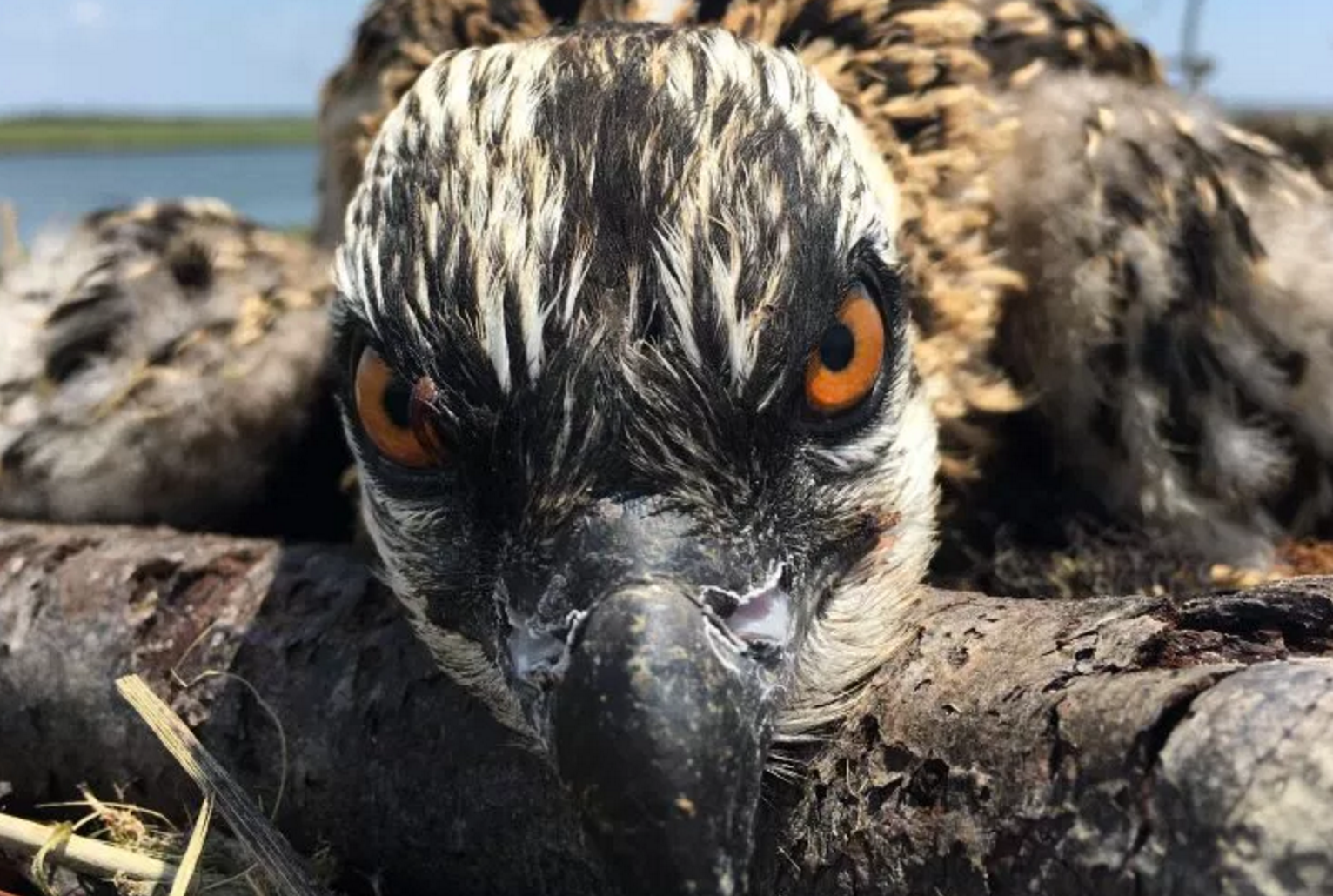17 young osprey died in Cape May County following Tuesday’s violent thunderstorms

A young osprey that remained in its nest during Tuesday's thunderstorms in Cape May County. (Photo: Ben Wurst)
An emergency survey conducted yesterday by a New Jersey wildlife organization revealed that 17 young ospreys were found dead near their nests in Cape May County following Tuesday’s violent thunderstorms.
According to the Conserve Wildlife Foundation of New Jersey’s Ben Wurst, a team surveyed 50 active nests scattered throughout the county.
[Related: In Barnegat Bay’s Sedge Islands, ospreys reign]
“We motored throughout pretty every ditch, creek and channel in the back bays of the area and visited as many nests as we could. We ended up surveying 50 active nests,” he wrote in a blog post, in which he stressed that “time is of the essence” for the young fish hawks during late June.
“Most young are usually around two to four weeks now. We found young that were anywhere from one week old to six weeks old,” Wurst wrote. “Adults do not feed young when they are on the ground so if any were still alive then I knew we had to find them as soon as possible.”
The surveyors found that 15 nests sustained damage from the storm, which generated severe winds.
“Three eggs fell to the ground when an entire platform broke apart. Some other nests were likely to have had young but there was no evidence of them at all (adults were still territorial and on the nest),” he wrote. “It is hard to tell what actually killed the young that fell to the ground. We know they did not starve or were eaten.”
Wurst speculated that the severe weather, which also generated extreme downpours and flash flooding, likely caused the deaths on the ground.
“Without the adults to care for them they are very vulnerable to weather,” he added.
But there’s some good news.
“On a positive note, one nestling was found alive!!” Wurst wrote. “It was placed back in its nest successfully. From all the nests that I checked most young did survive, 35 in total, so the damage was not too terrible.”
Highlights of the 2015 Osprey Report, which provides the number of nesting pairs, active nests, and nest productivity for the raptors throughout New Jersey, include 534 active osprey nests (up from 420 in 2014) and nearly 600 pairs (up from 567 in 2014).
“Ospreys are an important indicator of the health of our coastal ecosystems, so it is important to track the health of their population. Their continuing recovery is a very promising sign for our estuaries and the fish and other wildlife that depend on clean water to survive,” said CWF Executive Director David Wheeler.
“Today, no visit to a coastal waterfront would be the same without the magnificent sighting of an osprey soaring above or crashing down to the water’s surface for a fish,” he said.
WHYY is your source for fact-based, in-depth journalism and information. As a nonprofit organization, we rely on financial support from readers like you. Please give today.

